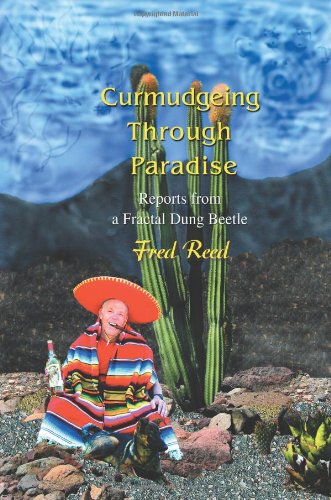This morning when I emerged groggily into something resembling consciousness, I didn’t know that I was going to establish the impossibility of ants. Here was a deep philosophical matter, creeping up on me surreptitiously.
The dogs as usual came thundering in to see whether we still existed and, having ascertained that we did, offered to have their ears scratched. Such are dogs. Our felines, Cat and Other Cat, sleep on the bed with us—north of the border, there is probably a federal law against this—and also want our attention. Why? They get nothing by sleeping with us. We feed them anyway.
Dogs intrigue me by their distinctiveness of personality and range of emotions: Anger, affection, fear, curiosity, jealousy, concern, and guilt. Scientifically speaking, I am not sure whether this is proper. They were street dogs however, and perhaps not cognizant of the more advanced theories. They do understand guilt, whether they are supposed to or not. When we come home and Charlie has a hang-dog expression, and grovels in submission, and
 Curmudgeing Through Pa...
Best Price: $2.50
Buy New $17.73
(as of 01:45 UTC - Details)
doesn’t run over to greet us, we know he has been digging in the garbage, which is forbidden. He knows it too.
Curmudgeing Through Pa...
Best Price: $2.50
Buy New $17.73
(as of 01:45 UTC - Details)
doesn’t run over to greet us, we know he has been digging in the garbage, which is forbidden. He knows it too.
Our dog Africa, who is very long and low and pretty and seems to be a cross between a Border Collie and a fire hose, is an hysteric. When I walk downstairs she barks joyously and rushes madly about, as though I were Zeus Descendant, even though she saw me go upstairs half an hour earlier and knows that I always come back down. You can’t be out of your mind unless you have one to be out of, is what I say.
Which brings us to golondrinas, swallows. (You may not see why it does. Well, it does.) We have a nest of them in a corner of the downstairs terraza. They produced five eggs this year, and sat on them as is right and fitting forgolondrinas. When the nestlings appeared, the parents tirelessly brought them, every few minutes, a portion of whatever swallows eat. When the little buggers reached the age at which flying began to seem a good idea, the parents began hovering inches from the nest, as if saying, “See? This is how you do it.” They had not done this before.
 The Great Possum-Squas...
Best Price: $7.67
Buy New $11.66
(as of 01:55 UTC - Details)
One of the new birdlets flew tolerably well for a beginner, but landed on the ground where there are cats. (Actually we had locked the cats inside for precisely this reason, but mother swallows don’t always know this.) The parents landed next to it and began pecking the little fellow unpleasantly, until it took off and went back to the nest. I have read that they do such things purely on instinct and do not know why they do them. How would one know this? Personally, I think they suspect cats.
The Great Possum-Squas...
Best Price: $7.67
Buy New $11.66
(as of 01:55 UTC - Details)
One of the new birdlets flew tolerably well for a beginner, but landed on the ground where there are cats. (Actually we had locked the cats inside for precisely this reason, but mother swallows don’t always know this.) The parents landed next to it and began pecking the little fellow unpleasantly, until it took off and went back to the nest. I have read that they do such things purely on instinct and do not know why they do them. How would one know this? Personally, I think they suspect cats.
I know that birds are biological automata running on chemically programmed code, and have no feelings or idea of what they are doing. I know this. I just do not believe it. Further, I do not understand the almost universal affection people feel for the very young. The very young of about everything: young puppies, kittens, burros, golondrinas. In terms of evolutionary biology, which we are told governs everything, affection for young swallows is hard to figure. They are fearfully ugly, being all mouth and no brain, which I concede suggests an evolutionary connection with network anchors. But we are quite fond of them. (Not the network anchors.)
I will now offer a formal proof of the nonexistence of ants. First, we will note the above ant on top of the eye of a needle. We will further note that there is almost no ant there. We will now ponder the size of its brain, to include distributed parts of it. If an ant is so small that it almost isn’t there, and most of an ant consists of legs, chitin, digestive things, and so on, then its brain, to include all of its nervous tissues, is greatly more isn’t-there.
 A Brass Pole in Bangko...
Best Price: $3.94
Buy New $18.80
(as of 01:20 UTC - Details)
A Brass Pole in Bangko...
Best Price: $3.94
Buy New $18.80
(as of 01:20 UTC - Details)
We will now consider what an ant can do. First, it can walk. If you think this is no great shucks, talk to a robotics engineer with a cable-connected supercomputer. Ask him how easy it is to make six legs with multiple joints each work together while climbing over things. If you think about the amount of sensory feedback necessary to know where these legs are at a given moment, and what the pressures and angles are, you will get dizzy. The ant does it effortlessly, with about as many brain cells as a congressman has IQ points. This would suggest perhaps three brain cells.
There is worse, much worse. That same ant, with only three congressional brain cells, can interpret the data from both of its compound eyes and its ocelli—tiny non-compound eyes. Now, the guys who wrote PhotoShop could merge all those inputs from a jillion ommatidia and come up with something reasonable as an image, but doing it in real-time, in the equivalent of about six lines of code, with three brain cells for processing power—they would run screaming to the nearest bar and begin living under a park bench.
The same ant knows, somehow, to dig a nest properly, to run like hell when it is scared, and to care for the queen and the eggs and larvae. It manages its internal organs and antennae. It knows how to groom itself, putting it ahead of many teenagers, and how to find food, which requires operating the senses used to do this. I could go on. But since each of these things is impossible, so is the ant. Therefore, ants do not exist. QED.
(I suspect that the impossibility of several things in one nonexistent ant is the product the individual impossibilities. I will leave this matter of multidimensional impossibilities to the reader as an exercise.)
If I may lapse momentarily into unwonted seriousness, I claim these picnic micromonstrosities pose a baffling question of cybernetics. They must be doing something far beyond the grasp of our tiny boiling imaginations. Replicating an ant in hardware of the same size is out of the question. Molecular computing? Well, the little beast does it some way. Humans with our quart-and-a-third of mushy brains can do much more than ants can, but not proportionately more. The nerve tissue of how many ants would be needed to fill on human cranium?
To which I usually get the witless response, “But Fred, ants have an entirely different kind of brain.” That’s not the answer. It’s the question.







